Technical analysis of the Haas VF-19: the first to be known ...
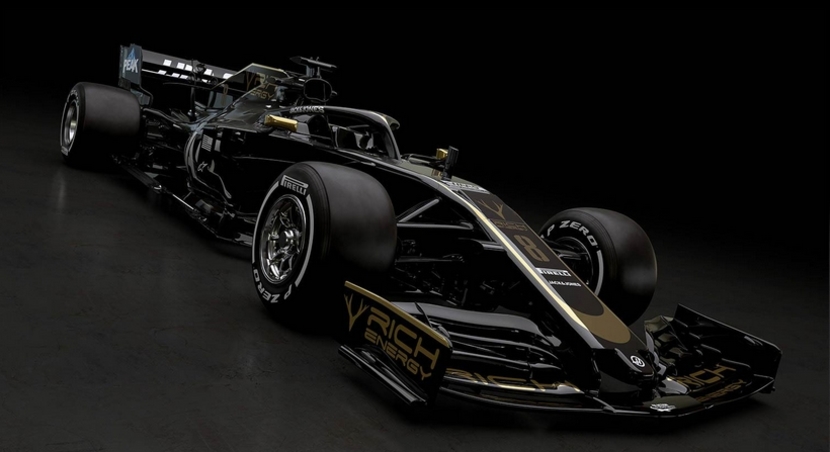
Haas has today presented the new decoration for its sponsor Rich Energy . We already informed in AM that it would be black and gold, same colors that this sponsor of energy drinks has that will compete in the market and on the track with its main rival: Red Bull. The American team used the car last year with the new decoration to have it as a model present during the presentation ceremony.
But they have also shown rendered images of the new model, although the final car we will see on February 18 when the preseason begins at the circuit of Montmeló. However, with the renders we can already see the details of the new car and analyze at a technical level what we can see. Anyway, teams, renders or cars are always kept physically details that do not include in the presentations and ride for the first time in the tests ...
Haas has been the first to show your car almost by surprise, in fact we did not have it planned according to the dates of presentations that we handled. And it seems that they start as always, with very high morale. In fact, they have said that their car will be ahead of Red Bull in some races. We'll see if that's true, since at a commercial level it would be very interesting for Rich Energy to be in front of Red Bull, but one thing is to say it, and another to do it. It will depend on how the Red Bull car and the Honda engine are.
But beyond these beautiful colors that can remind us a bit of the Lotus, the car is already beginning to give us an idea of what the new designs of 2019 will be with those changes of regulation that make that the cars have a longer battle (to accommodate a larger fuel tank), the new wider and simple front spoiler to encourage overtaking (at least that is tried) and the rear spoiler also wider.
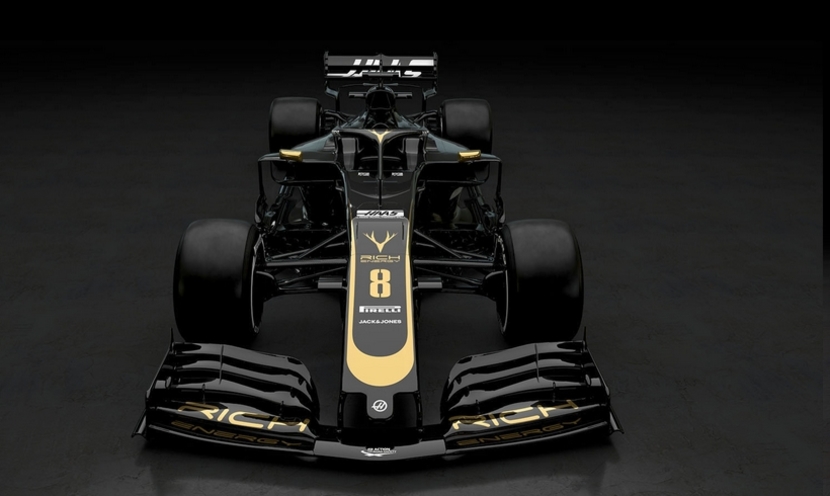
The first thing that strikes you is the wing front , which complies with the new technical regulations, ie, grows across the width of the car, with a forward position in the middle area that retracts with form we approach the lateriales (form of arrowhead), and the wing is greatly simplified and the endplates to try to avoid the generation of vortices that go backwards and that make it not so easy to overtake. Why? Simple, cars must approach the car in front to catch the slipstream and be able to overtake. On the other hand, at the moment they have to take off a bit from the car they are following because in the corners they lose a lot of downforce due to the long, low pressure wake generated by the car in front of those vortices.
Now, with this new design much simpler, it is intended that the car behind does not lose so much downforce when approaching the car in front, so that can get closer in twisty areas without losing load and thus try to put the nose more easily to overtake. I have to say that this is what is intended, but it does not have to correspond with reality. Since in other occasions we have seen how what the FIA thinks then does not happen as they believed. I think it's going to generate more overtaking, but you have to be careful and see what happens.
As for the wing that we see, it has lost the flow stops and deviators that it had in the outer zones as the regulations say. Now it only presents 5 simple planes and some quite straight endplates (that arrive from the middle zone to the outside) and without sophisticated aerodynamic details.The only thing that can be seen above the main plane are two small chambers located in the laterials and anchored to the endplates.
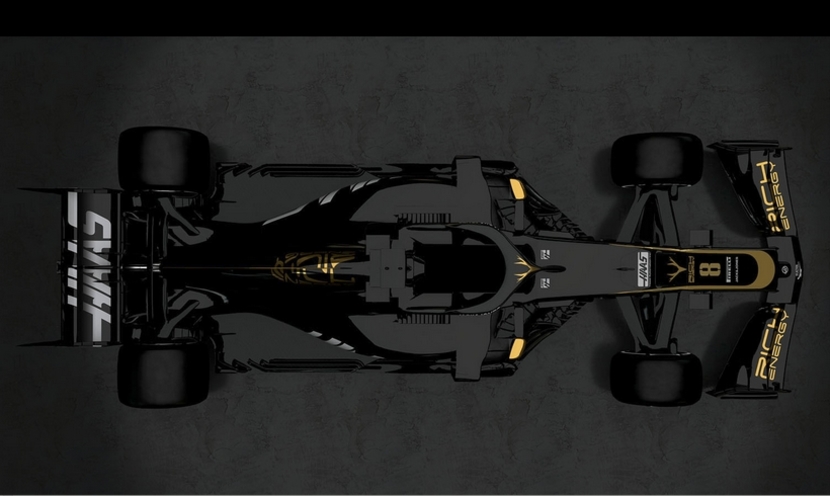
The front suspension is similar to last year's, like el morro , which has not changed in the past year. Only the anchor of the spoiler has been changed by that arrow shape that we will see in all the designs that I mentioned above. We also see in the nose the opening of the S-Duct to extract air through the lower area of the nose and thus improve aerodynamically. But beware, because this year also fences or those profiles that were under the front wing to redirect air through the lower part of the spoiler are removed.
In the middle zone we follow seeing that extreme complexity that is complicated to analyze even for the most aerodynamic experts. It has become very complex since 2017 as we have seen. And here you can win or lose a lot of time per lap if you work properly, since the flows that travel backwards will depend on the front and this zone. As for the rear, we see that it is compact, leaving more space on the sides to direct the greater amount of flow towards the upper area of the diffuser and help extract the air traveling under it to have a higher load with a 0 penalty (remember that the diffuser generates charge without generating that drag generated by the wings ...). And since we are talking about the background, to say that seen from above is also like the Ferrari of the past year ...
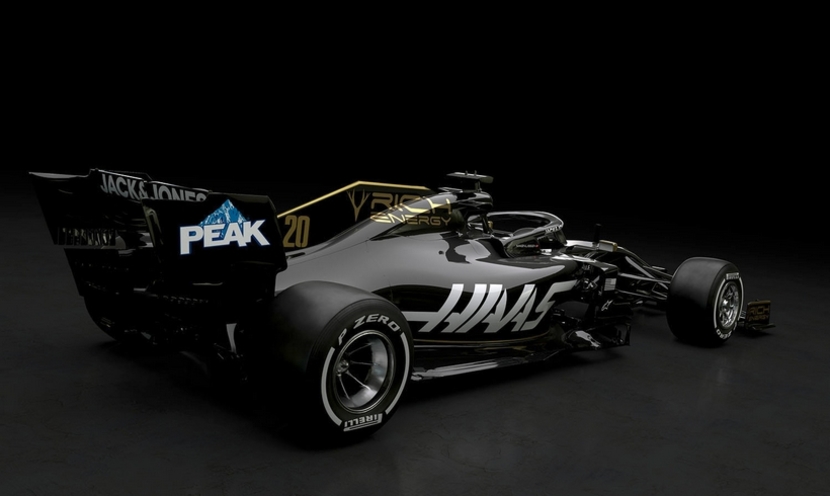
If we look at details of the car, it looks like a Ferrari from 2018 painted with new colors, as usual at Haas. Recall that the chassis is built by Dallara, and Haas is supposed to develop, but they buy a lot of components from Ferrari and the designs have raised suspicions and the rest of the teams have protested to the FIA because they say that the new Haas are practically a Ferrari from the previous year. The FIA has considered it valid, but that does not mean it is not, only that in the eyes of the FIA they are not doing anything illegal ...
Therefore, if we imagine that the Ferrari of the year last was the best car in most circuits, we can anticipate that Haas will have this year a very good car . Everything will depend on what the other teams have won or lost with the changes. But in principle, Haas comes out with a good advantage. And if Ferrari has improved its engine noticeably, they could remain that 4th force as last year. I hope your riders, who have not changed, are up to scratch and do not miss the opportunity like last year ...
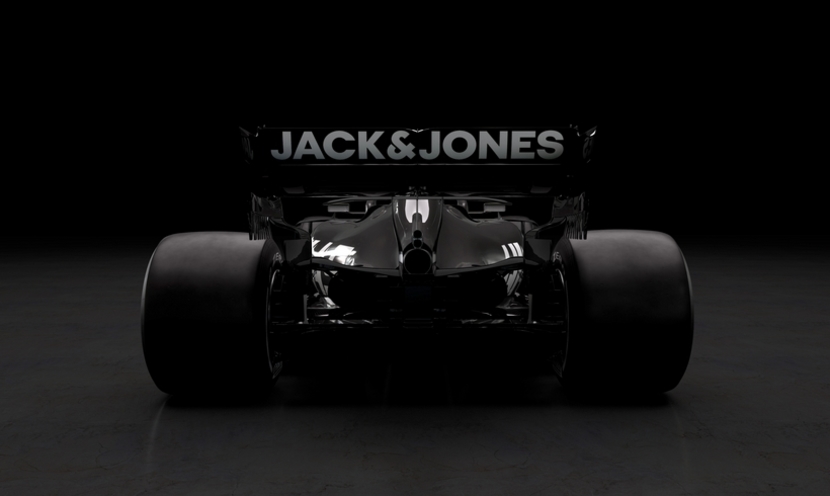
The back wing we see that it has also changed by the new regulations. We see that in the middle area of the rear endplate widens and makes a curve so that the wing is wider as the regulations say. A super large spoiler, and that presents a few ortes in the endplates in the style of what McLaren has been making fashionable. In this image, it can also be seen that the rear wing is of considerable size in terms of the wing, which could indicate a lack of efficiency in the diffuser for those changes that have been made in the regulations. By not generating vortices in the front wing, the flat bottom is not sealed on its sides by said vortices, and for that reason could be so large (I do not mean width).
The rear diffuser is hidden in this image as usual in presentations.As we can see, we continue adding details that are traced from the Maranello design. And if you have noticed the sidepods, that is, the pontoons, you will see that they are the same as last season's Ferrari. Very small, high and thin to leave a large channel in the lower area and redirect the air to the rear area. Please, look at photos of the Ferrari SF71H and you will see what I said ...
Pontoons, airbox (oval, large size and divided into 4 differentiated zones to redirect the air to the turbo and also to cool oil, intercooler , and other auxiliary elements), nose, rear, suspensions, flat bottom, etc., is like the Ferrari SF71H . What they do not seem to have copied are the complex rear-view mirrors that Ferrari had, although as you know it is a render and we will have to see what is seen in the tests. Nor do they appear in the Haas drilling on the sidepods that were in the Ferrari last year, just after the aerodynamic profiles that surround the pontoon and that the Haas are "welded" with the engine cover in the upper area. Instead, the design of the VF-19 is in true Red Bull style in this regard.
I've always wondered if Ferrari can also have an advantage of all this, beyond having an equipment B for the data ... For example, in terms of hours of CFD dedicated to development (the FIA only controls hours of wind tunnel, hours of CFD or FLOPS used for the simulations, but not what type of pieces are developed) of a single prototype and thus have a large chassis and then inherit it next year ... What there is no doubt is that what they do is very intelligent and that it is totally legal, because the FIA has so dictated. It's like when Red Bull took out intelligent designs that brushed the limits of the regulation, but they were legal. Bravo for them! In short, these are just assumptions!
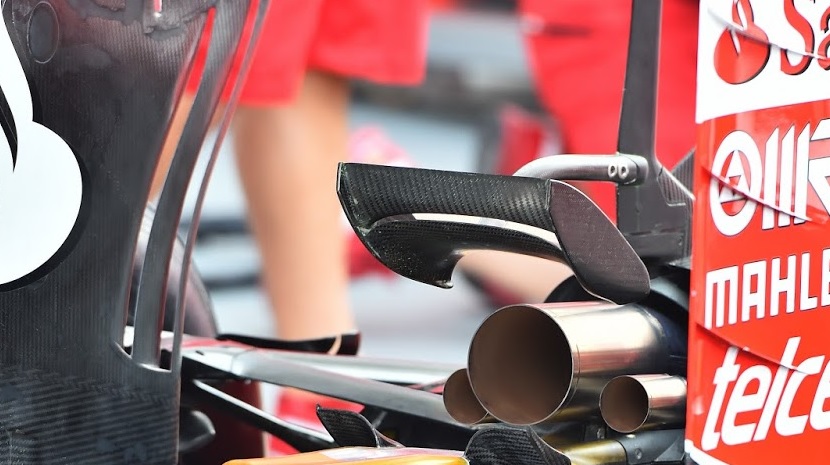
And finally, the Haas has discovered a very interesting detail of the new Ferrari engine, and is the placement of the two tubes that accompany the main exhaust, as you can see in the photo of the Haas are stacked, one on top of another and not to the sides. Already in Germany last year they tested a new position of the tubes of the valves waste (Remember the protests that there were and the investigation of the FIA in what was called Wastegate by the denunciations of Mercedes to see the amount of smoke that left this area in Ferrari, suspecting by the burning of oil) for the discharge of gases. These tubes came by a new regulation of the FIA to improve the sound of the V6 Turbo, but the teams always usually take advantage of the gaps of the regulation. Renault also inclined these tubes to blow in the lower area of the rear wing and get more cargo ...
These tests of the GP of Germany ended with the two side tubes that you see in the photo in the area above as has this year's Haas and the use of a modified rear spoiler, so it was suspected that this placement had a impact on the aerodynamics so that the valves would open at times and eject flow to improve the load in curves. In addition to that, it is possible to close the motor cover a little more in the back area and thus make it narrower and the benefits that it brings as we already know ...
It may interest you

